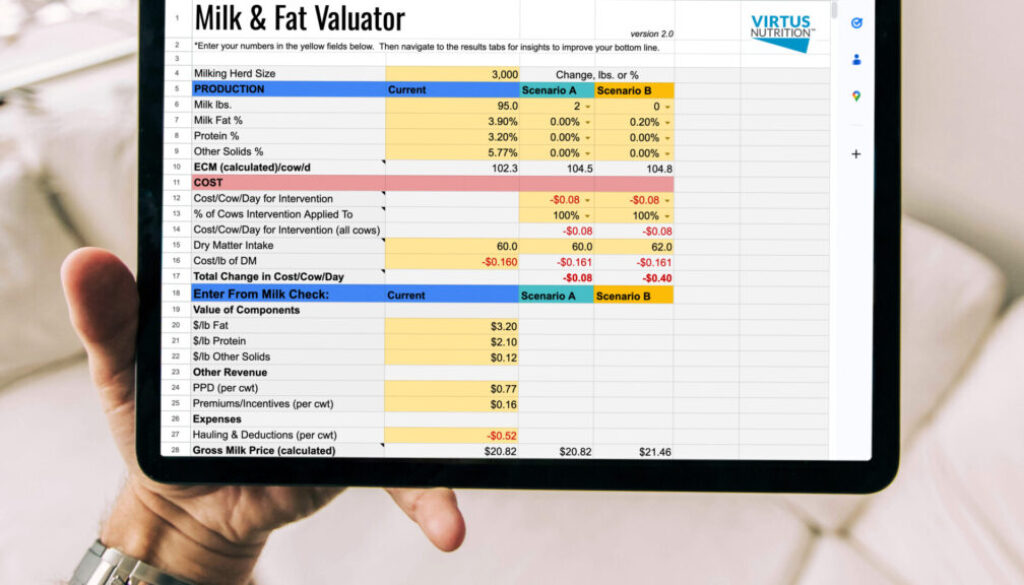Chasing Milk Fat $$$? Analyze Your Milk Check to See if it Pays with the NEW Milk & Fat Valuator 2.0
At Virtus Nutrition, we’re often asked what the best combination of fatty acids is to feed to dairy cows to provide for greater milk fat and production efficiency. Specifically, how much Palmitic and how much Oleic should I be feeding to maximize milk fat AND improve fatty acid digestibility for greater feed efficiency and body condition support?
No matter where you’ve landed in this debate, it is important to look at the right metrics to assess your fat supplementing decisions. That’s where the NEW Milk & Fat Valuator 2.0 comes in…the free downloadable sheet from Virtus Nutrition that allows you to run ‘what-if’ scenarios based on your own milk check values and quantify the value of your ration decisions.
What metrics are the key metrics to track when it comes to evaluating fat supplement changes? While milk fat % is the obvious answer, there is a lot more going on when fat supplement changes are made besides milk fat production. We recommend these three metrics be front and center with any changes affecting fatty acids:
- Milk Fat % and Pounds
- ECM
- DMI
+ Body Condition
While milk fat % is the quick and easy response to measure, changes in DMI and total milk flow are more challenging to quantify. However, a few pounds lower DMI or greater milk flow from greater fatty acid digestibility may be just as consequential regarding economic impact. And let’s not forget body condition, especially in that fresh period as Palmitic vs.Oleic have direct effects on her hormone signaling and fat mobilization during this critical period.
While we know that fatty acids are complicated, we hope that adding Milk & Fat Valuator 2.0 to your decision toolbox can help you navigate more quickly through fat supplement decisions, accounting for all the metrics that matter.
P.S. Check out the results from this recent Michigan State study comparing a 70:20 Palmitic to Oleic blend vs. a traditional calcium salt with a 50:35 Palmitic:Oleic ratio with significant differences across all three of our key metrics.
P.P.S. The best economic result may not be what you’d expect if milk fat alone was your metric!







